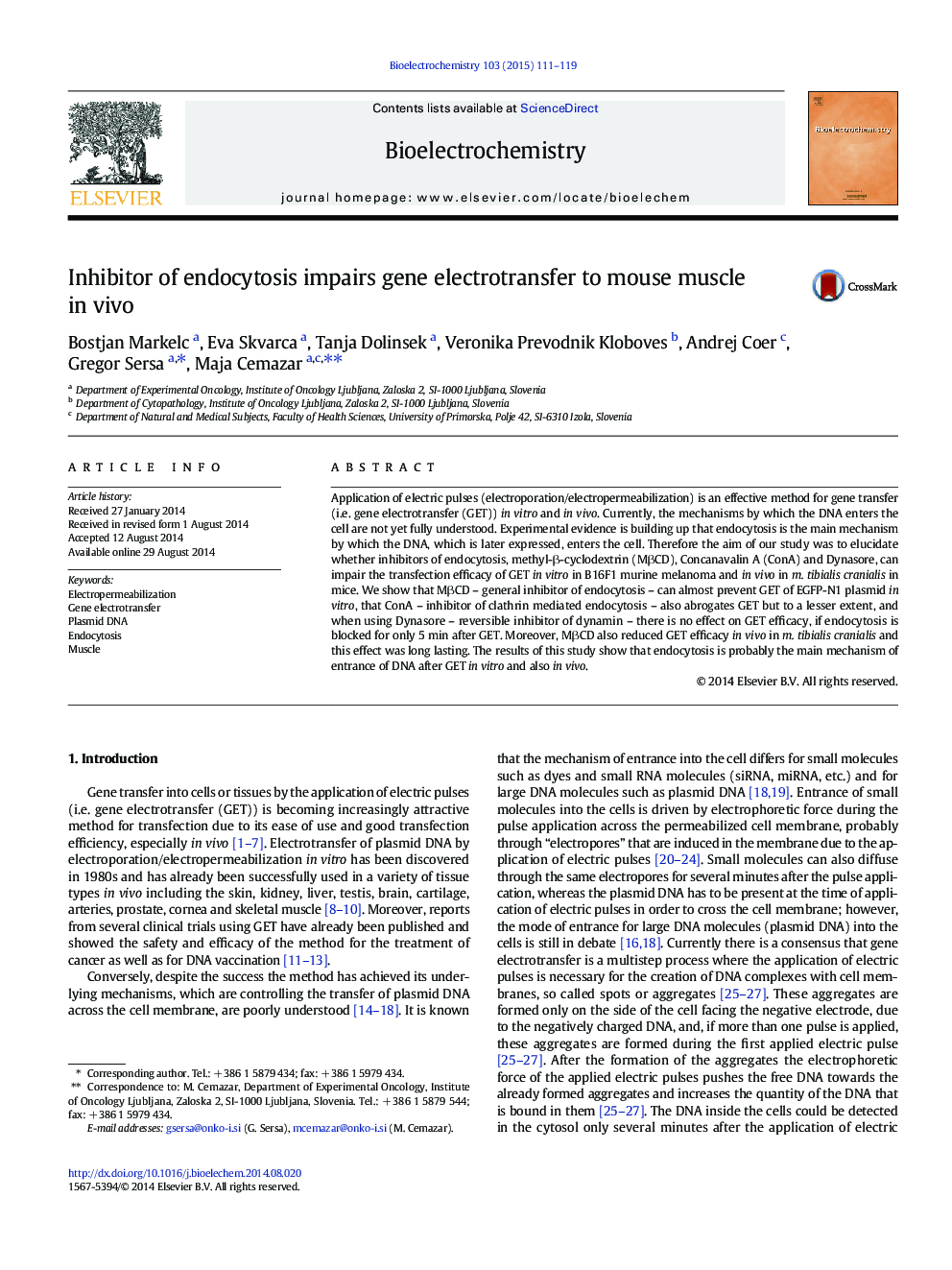| Article ID | Journal | Published Year | Pages | File Type |
|---|---|---|---|---|
| 1267909 | Bioelectrochemistry | 2015 | 9 Pages |
•Inhibitors of endocytosis can reduce GET efficacy in vitro.•Methyl-β-cyclodextrin (MβCD) can almost prevent GET in vitro.•Concanavalin A is less effective in reducing GET efficacy than MβCD.•GET efficacy is not affected by inhibition of endocytosis for only 5 min after GET.•MβCD decreases GET efficacy in vivo in m. tibialis cranialis.
Application of electric pulses (electroporation/electropermeabilization) is an effective method for gene transfer (i.e. gene electrotransfer (GET)) in vitro and in vivo. Currently, the mechanisms by which the DNA enters the cell are not yet fully understood. Experimental evidence is building up that endocytosis is the main mechanism by which the DNA, which is later expressed, enters the cell. Therefore the aim of our study was to elucidate whether inhibitors of endocytosis, methyl-β-cyclodextrin (MβCD), Concanavalin A (ConA) and Dynasore, can impair the transfection efficacy of GET in vitro in B16F1 murine melanoma and in vivo in m. tibialis cranialis in mice. We show that MβCD – general inhibitor of endocytosis – can almost prevent GET of EGFP-N1 plasmid in vitro, that ConA – inhibitor of clathrin mediated endocytosis – also abrogates GET but to a lesser extent, and when using Dynasore – reversible inhibitor of dynamin – there is no effect on GET efficacy, if endocytosis is blocked for only 5 min after GET. Moreover, MβCD also reduced GET efficacy in vivo in m. tibialis cranialis and this effect was long lasting. The results of this study show that endocytosis is probably the main mechanism of entrance of DNA after GET in vitro and also in vivo.
Graphical abstractFigure optionsDownload full-size imageDownload as PowerPoint slide
